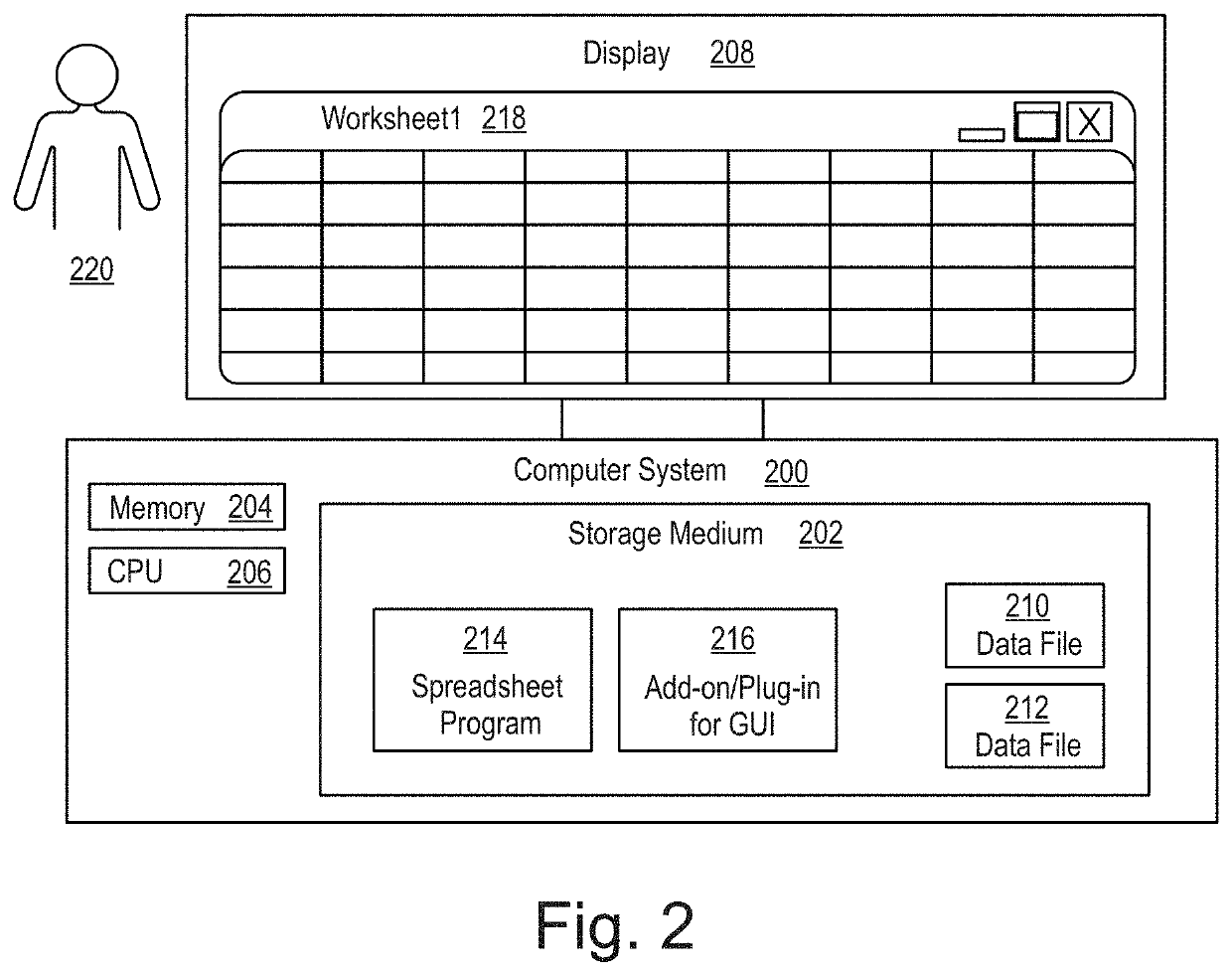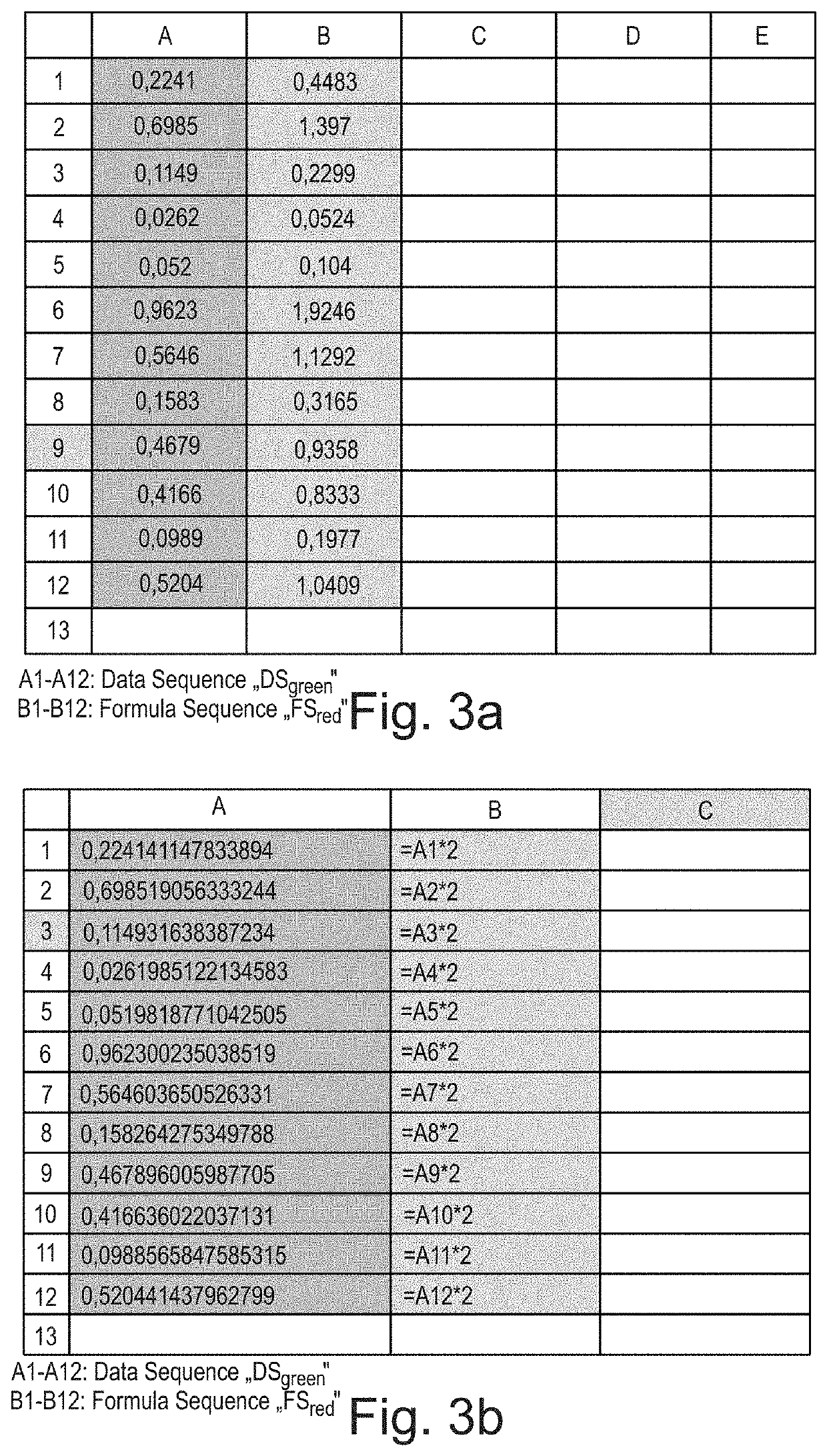Pattern-based filling of a canvas with data and formula
a formula and data technology, applied in the field of data processing, can solve the problems of generating formula copies, time-consuming and error-prone tasks, and long lists of data values and formulas in office applications such as microsoft excel, and achieve the effect of reducing the complexity of the canvas and reducing the totality of the potential interdependence of forms
- Summary
- Abstract
- Description
- Claims
- Application Information
AI Technical Summary
Benefits of technology
Problems solved by technology
Method used
Image
Examples
Embodiment Construction
[0192]An “electronic document” as used herein is a set of data which are electronically formed, sent, received or stored on electronic, magnetic, optical or other medium and that preferably encodes a digital picture of a document similar to a paper document. For example, an electronic document can be a digital file of an office application like MS Word, MS Excel, MS PowerPoint, OpenOffice, and others.
[0193]A “canvas” or “electronic canvas” as used herein is a region of an electronic document, e.g. a page or a part of a page of an electronic document, that is configured to be presented to a user as a visual output, e.g. a display and / or a printout. Preferably, the canvas comprises individual elements, e.g. cells, that can be addressed individually and that can comprise data values and / or formulas and that can be assigned a defined format (e.g. a particular background color or background image, a border color, border width, font type, font size, font color and the like).
[0194]A “works...
PUM
 Login to View More
Login to View More Abstract
Description
Claims
Application Information
 Login to View More
Login to View More - R&D
- Intellectual Property
- Life Sciences
- Materials
- Tech Scout
- Unparalleled Data Quality
- Higher Quality Content
- 60% Fewer Hallucinations
Browse by: Latest US Patents, China's latest patents, Technical Efficacy Thesaurus, Application Domain, Technology Topic, Popular Technical Reports.
© 2025 PatSnap. All rights reserved.Legal|Privacy policy|Modern Slavery Act Transparency Statement|Sitemap|About US| Contact US: help@patsnap.com



